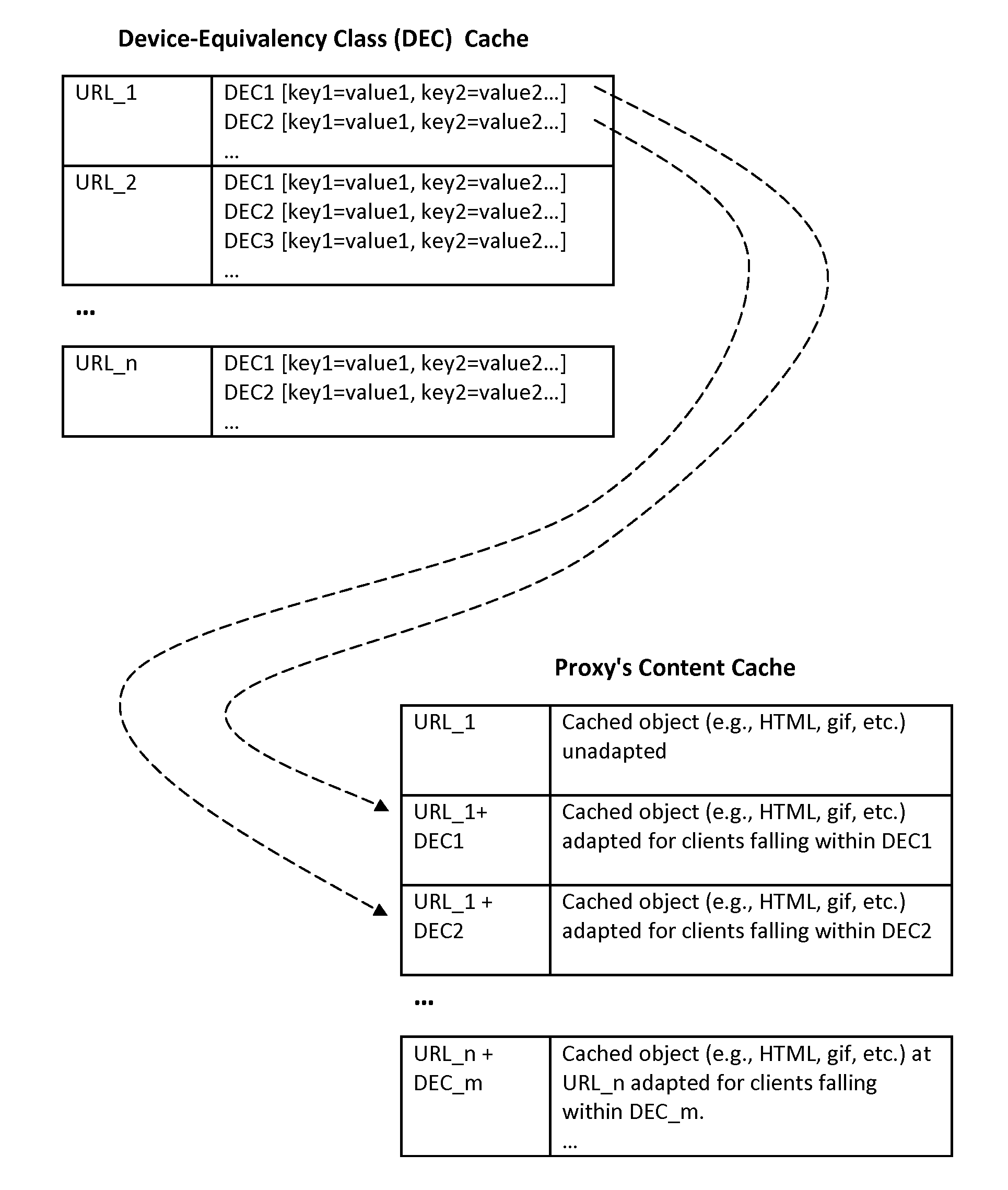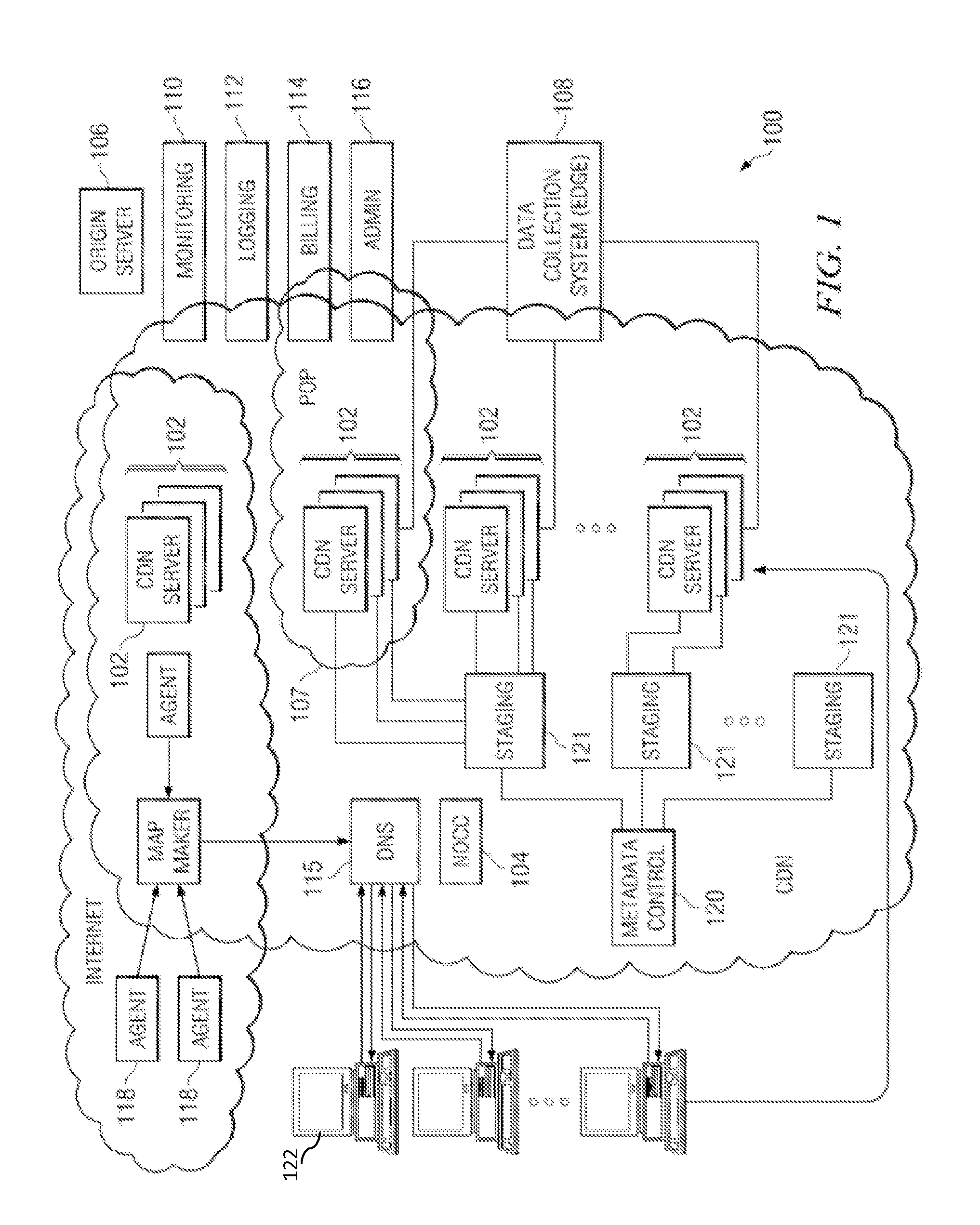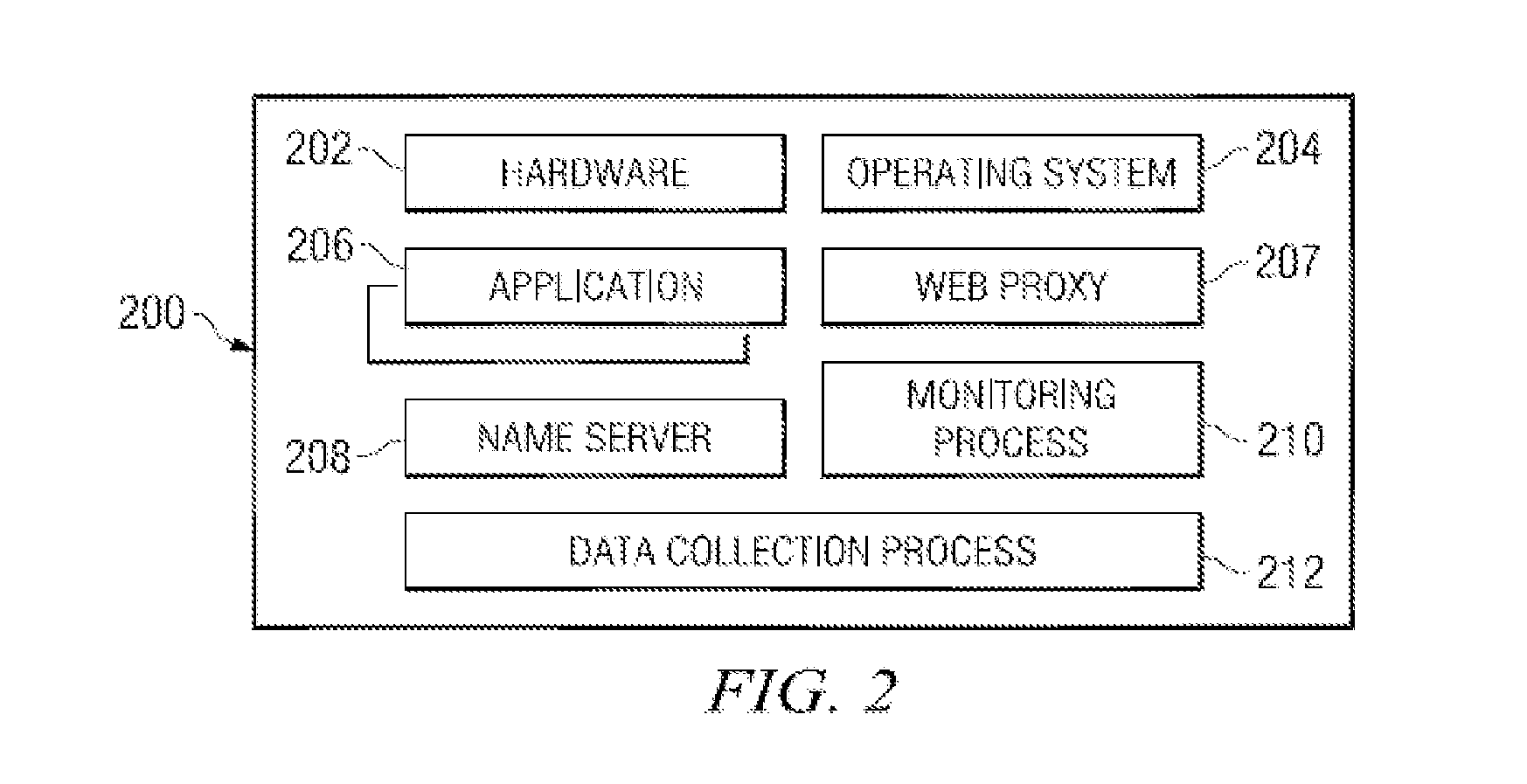Methods and systems for delivering content to differentiated client devices
a content delivery and client device technology, applied in the field of content delivery to client devices, can solve the problems of not addressing how to efficiently deliver an appropriate version, the number of such versions can rapidly increase, and the device's display or processing power is limited, so as to improve the chances of a cache hit, improve the delivery of content, and facilitate the determination
- Summary
- Abstract
- Description
- Claims
- Application Information
AI Technical Summary
Benefits of technology
Problems solved by technology
Method used
Image
Examples
example
[0109]Content server sends characteristics gleaned from request: Country=US, State=FL
[0110]Origin server returns with vary header: Country=US, State=FL,GA,SC
[0111]Thus, this response indicates that the response is valid for future requests from several different states in the southeast US.
[0112]6.0 Computer-Based Implementation
[0113]The clients, servers, and other devices described herein may be implemented with conventional computer systems, as modified by the teachings hereof, with the functional characteristics described above realized in software, special-purpose hardware, general-purpose hardware modified or reconfigured by software stored therein for special purposes, or a combination thereof.
[0114]Software may include one or several discrete programs. Any given function may comprise part of any given module, process, execution thread, or other such programming construct. Generalizing, each function described above may be implemented as computer code, namely, as a set of compu...
PUM
 Login to View More
Login to View More Abstract
Description
Claims
Application Information
 Login to View More
Login to View More - R&D
- Intellectual Property
- Life Sciences
- Materials
- Tech Scout
- Unparalleled Data Quality
- Higher Quality Content
- 60% Fewer Hallucinations
Browse by: Latest US Patents, China's latest patents, Technical Efficacy Thesaurus, Application Domain, Technology Topic, Popular Technical Reports.
© 2025 PatSnap. All rights reserved.Legal|Privacy policy|Modern Slavery Act Transparency Statement|Sitemap|About US| Contact US: help@patsnap.com



